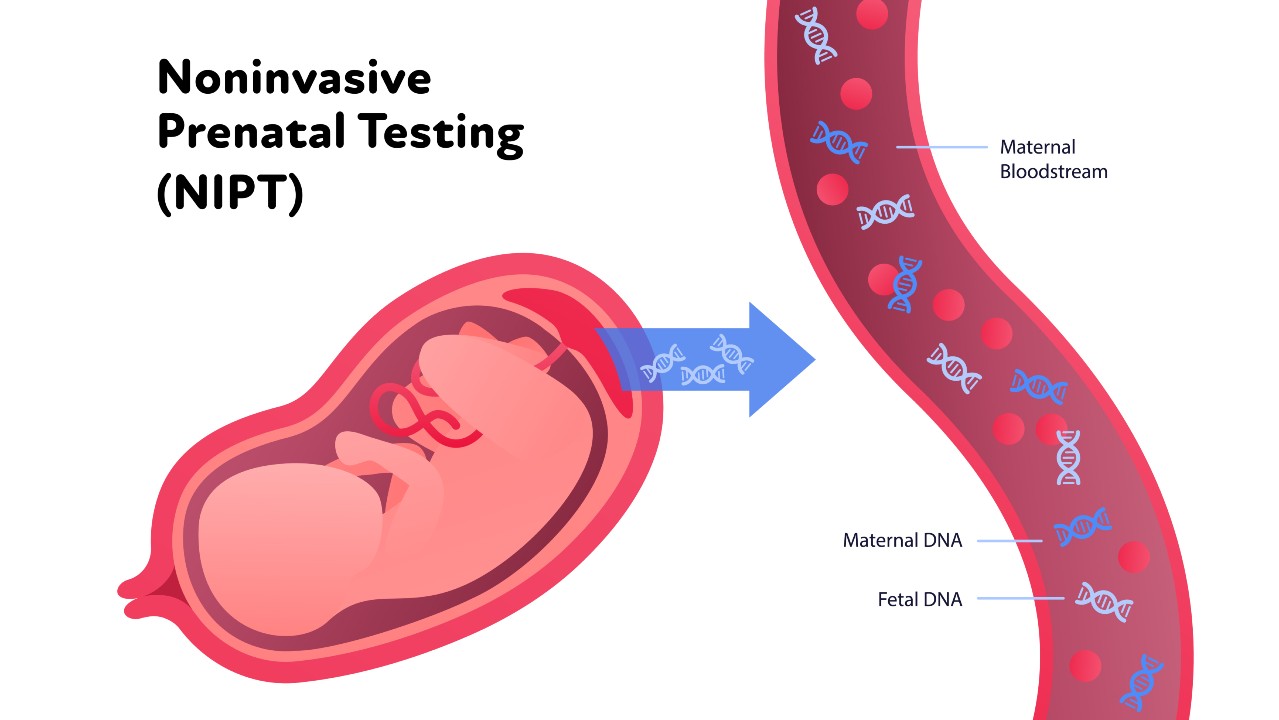How Can I Find Out Gender of Baby
Sex prediction: Am I having a boy or girl?

There are many methods of sex prediction out there for expecting parents, only the most commonly used is ultrasound.
Ultrasounds have a variety of purposes during pregnancy, but the utilise that often receives the nigh attention is its ability to reveal the sex of the baby.
Some parentshoped-for can't wait to find out whether they're having a male child or a girl, while others cull to put off knowing the sex until birth. Either way, a sonogram — the grainy, black-and-white paradigm that results from an ultrasound scan — volition exist the baby'southward primeval picture and a couple's beginning chance to run into the developing fetus.
Ultrasound uses high-frequency sound waves to produce an epitome on a screen of the baby in the mother's uterus. The scans are typically done twice during pregnancy, but the one done between 18 and 22 weeks is when the sonographer (ultrasound technician) might identify the sex activity of the baby, if parents desire to know, according to the U.South Food & Drug Administration.
Expectant parents who want their child's sex to remain a secret until nascency are in the minority, said Dr. Stephen Carr, managing director of the Prenatal Diagnosis Eye and of maternal-fetal medicine diagnostic imaging at Women & Infants Hospital of Rhode Island in Providence. He said about 85% of couples want to discover out the baby'southward sex earlier commitment. They practice then for several reasons: to know how to paint the nursery, selection a name or satisfy their curiosities about the family unit limerick.

Even so, "more and more people are telling u.s.a. they desire to wait until the babe arrives to find out the sex," Carr said. "It's the terminal great surprise left," he noted.
Increasingly, Carr said, couples have asked him to write down the baby's sex and place the respond in a sealed envelope. This is because some parents-to-be want to host a gender-reveal political party for family unit and friends to share the news.
Beyond ending the guessing game, in that location are tin can be medical reasons why mothers and fathers may want to learn the sex of their baby from an ultrasound, such every bit identifying some congenital conditions which are more prevalent in i sex.
U.S. hospitals have used ultrasounds since the late 1970s and early on '80s, Carr said. But the common prenatal scan wasn't intended as an examination to notice out the baby's gender; information technology was meant to image the developing fetus for other medical reasons, he said.
Although the test can be done at any signal during pregnancy, women typically get one during the start trimester. This early ultrasound is ofttimes done to confirm a pregnancy, find the fetal heartbeat and determine the due appointment, according to the Mayo Clinic.
A second ultrasound is unremarkably done between the 18th and 22nd weeks of pregnancy to make sure that the baby is growing and developing properly. Information technology's typically during the second ultrasound that parents tin larn the sex of the baby.
The scan is also done to see if a woman is having more than ane baby, as well as to determine the location of the placenta and umbilical string. In improver, ultrasound can identify sure birth defects, such every bit Down's syndrome and spinal abnormalities, and investigate pregnancy complications, including miscarriage, according to the Mayo Clinic.
Is ultrasound a prophylactic way to predict gender?
Ultrasound is a condom prenatal test, according to research published in the periodical Ultrasound in Obstetrics & Gynecology. It uses sound free energy and not radiations, such as X-rays, to generate images of the fetus.
During a transabdominal ultrasound, a pregnant woman lies on her back while a clear gel is spread on her belly, according to Johns Hopki n south Medicine. Next, a probe called a transducer is moved over the woman's abdomen, which transmits sound waves that tin produce images of the fetus as information technology develops inside the female parent'due south womb.
There is no impairment to the baby during the process, Carr said. And the only risks to the female parent may come from lying flat on her dorsum, which might make her feel dizzy, forth with the discomfort of having a full float, he said. (Women may be asked to drink several glasses of h2o before an ultrasound considering a filled bladder helps give clearer images.)
How accurate is gender prediction using ultrasound?
Gender predictions made by ultrasound have an accuracy rate "north of 90 percent," Carr said. Only mistakes can be fabricated when determining gender because it depends on the clarity of the images and the skills of the person interpreting them.
Until the 14th calendar week of pregnancy, baby boys and girls look exactly the same on ultrasound, Carr said. Across this indicate, noticeable anatomical differences in the genitals tin can prove upwardly on the scan.
After xviii weeks of pregnancy and beyond, Carr said that ultrasounds have pretty good reliability for gender prediction if the baby is in a expert position in the mother's uterus (meaning that it is not in a breech, or feet-downward position), and the legs are far plenty apart that there is good visibility between them.
"Gender-telling is not exotic," Carr said. When a sonographer looks between the legs, if it's "an outie," it's a boy, he explained.
Be wary of keepsake ultrasounds
Carr said that he understands the psychology of expectant parents wanting to see an image of their baby. Even so, he doesn't endorse and then-chosen "bonding scans," which are also known every bit recreational or keepsake ultrasounds. These scans are done to produce keepsake pictures or videos, and not for medical reasons.
Ultrasounds should be used equally a diagnostic tool when at that place's a medical reason to do one, Carr said. The procedure is tightly regulated when it occurs in a hospital or medical clinic, he added.
That'south generally not the instance for commercial places doing emblem images: In that location is no regulation of ultrasound facilities outside of a medical setting, so their quality can vary wildly, Carr said. And the technicians may have limited medical training to interpret the scans, he noted.
Non-invasive Prenatal Testing (NIPT)
A blazon of screening called Non-invasive Prenatal Testing (NIPT) is used by doctors during pregnancy to screen for genetic weather such as Down's Syndrome and Edwards' Syndrome (a rare syndrome whereby children are born with 3 copies of a chromosome), according to the NHS. The examination examines a fragment of Deoxyribonucleic acid that'southward released from the mother placenta into the bloodstream and contains the genetic data of the fetus. A unproblematic blood test from the female parent is able to collect the Deoxyribonucleic acid required to conduct out DIPT.

Forth with detecting genetic conditions, the NIPT examination can reveal the sex activity of the fetus after only the 7th gestaitonal week, according to Norwegian Institute of Public Wellness. There are now at-home NIPT kits, such as SneakPeek, which apply a small blood sample – taken from the fingertip – to identify the presence of Y chromosomes (only found in males).
Old wives' tales are fun but generally not reliable for predicting sex
For some people, waiting until the 18th week of pregnancy to discover out the sex of a baby can feel like an eternity. To fill the void, people may turn to some of the following six quondam wives' tales to predict whether the fetus is a boy or girl.
Baby bump: Ane popular belief is that if a adult female is carrying the baby high, she is supposedly having a girl, while carrying the babe low means it'due south a boy. "Carrying loftier or low is a office of the mother'south intestinal wall musculus tone and the baby'due south position," Carr said. "It has no influence on gender," he said.
Food cravings: Another theory holds that a mother's food cravings during pregnancy may reveal the baby's sexual practice, with sweet cravings signifying a daughter and cravings for salty, sour or odd foods linked with a male child. "This has no basis in physiology," Carr said.
Fetal middle rate: There may exist some truth to the idea that fetal eye rate could be a clue. Early in pregnancy, at that place is no difference in eye charge per unit between the sexes, Carr said. But by the third trimester, a girl's heartbeat tends to be a little faster and a male child's a lilliputian slower, he said. Still, Carr cautioned that although researchers may find this association holds truthful over an average of 1,000 babies studied, an individual baby male child could still have a faster heartbeat, and an individual infant daughter could have a slower one.
Morning sickness : Folk wisdom has linked experiencing severe morn sickness with having a girl, and this idea may have some scientific discipline to dorsum it up. Women carrying girls have higher levels of the pregnancy hormone hCG (human being chorionic gonadotropin), and these higher levels are associated with an increased risk of astringent morning sickness, Carr said. But he warned there's not a hard and fast relationship between morn sickness and fetal sexual practice.
The Drano test: For this urban fable, a woman combines some of her first morning urine with the liquid drain cleaner. If the color turns green, the baby is said to be a girl; if it's bluish, a male child may be on the mode. Unfortunately, "there's goose egg to this idea, and Drano is really caustic," Carr pointed out.
Ring exam: To attempt this old favorite, a woman ties her hymeneals band to a string and hangs it over her pregnant belly to guess the baby's gender. If the ring swings back and forth, the babe is believed to be a boy. If information technology swings in a circumvolve, the child is thought to be a girl. "It's fun, but it isn't science," Carr said, chuckling.
Additional resources
For a complete guide to your baby's evolution check out DK'southward "Pregnancy Day by Day: An Illustrated Daily Countdown to Motherhood, from Conception to Childbirth and Beyond." A great reference guide to all things related to pregnancy "The Pregnancy Encyclopedia" past DK. Johns Hopkins Medicine also explains: What Is a Fetal Ultrasound?
Bibliography
Sebastián Manzanares et al, "Accuracy of fetal sex determination on ultrasound examination in the outset trimester of pregnancy," Clinical Ultrasound, Book 44, June 2016, https://doi.org/ten.1002/jcu.22320
Ricardo Savirón-Cornudella et al, "Ultrasound measurement learning of fetal sexual practice during the first trimester: does the experience affair?" Enquiry and Reports in Focused Ultrasound, Volume 3, August 2015, https://doi.org/10.2147/RRFU.S88738
Maria-Elisabeth et al, "Discordant fetal sex on NIPT and ultrasound," Prenatal Diagnosis, volume 40, March three, https://doi.org/10.1002/pd.5676
U.Southward. Nutrient & Drug Administration, "Ultrasound Imaging," September 2020.
Mollie Minear et al, "Global perspectives on clinical adoption of NIPT," Prenatal Diagnosis, Volume 35, June 2015, https://doi.org/ten.1002/pd.4637
Source: https://www.livescience.com/45582-boy-or-girl.html
0 Response to "How Can I Find Out Gender of Baby"
Post a Comment